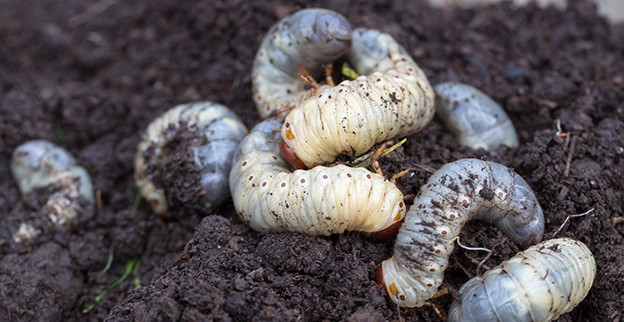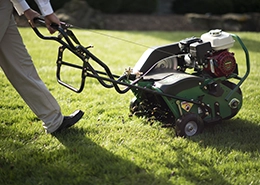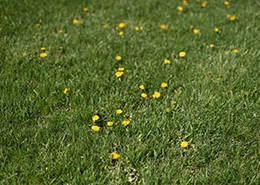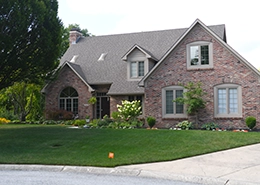The best way to fight grub infestation is with trained lawn care professionals. Lawn Pride® offers grub prevention service that prevents lawn grubs from becoming a serious problem. Learn more about our grub prevention services today!
Signs That You Have a Grub Infestation
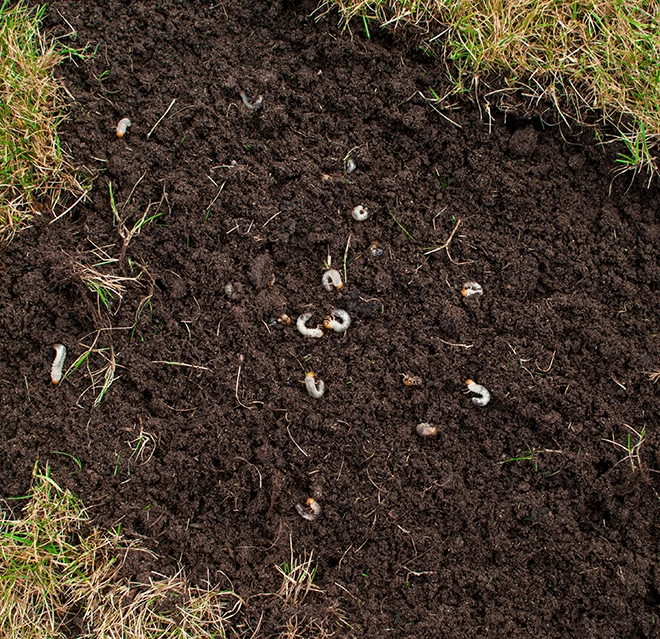
What are grubs?
Grubs are the larval stage of beetles. Beetles lay eggs under the soil. Those eggs grow into larvae. The larvae eventually form a pupa, and an adult beetle hatches out of that pupa. While they are grubs, they start as very small worms and grow into inch-long pests that look like worms.
Grubs almost always grow in large clusters. So, if you find one grub in your lawn, there are almost certainly more. This type of underground pest infestation can plague the proudest homeowners who do everything right when caring for their grass.

Request a Free Grub Prevention or Control Estimate Today!
Lawn Pride is more than just a lawn care company. We are a grub prevention and control company as well. While we are equipped to provide all the expertise you need to keep your lawn green and healthy, we also specialize in grub prevention and control. Even better, we offer free estimates for our services. To make your lawn as healthy as possible, request a free grub prevention and control estimate today!

Our Special Offers
We understand your goal to keep your lawn looking its best. We take pride in your lawn because we know you do, too. Check out our special offers to see how you can save on your next lawn care application.
What Our Lawn Grub Control Service Includes
Many homeowners have a grub problem and don’t even know it. Grubs live below the ground for most of the year. So, above ground, grub infestations can just look like unhealthy grass. When you notice the common signs of grub infestation, you need lawn grub control services to stop your grub problem from getting out of hand. Related services we offer include:
Customer Reviews
View All Reviews
The Neighborly Done Right Promise® delivered by LawnPride®, a proud Neighborly company.
Preventative Treatments vs. Curative Control Treatments for Grub Control
Grub treatments come in two main forms: preventative and curative. Preventative grub control treatments aim to kill larvae before they hatch or become active enough to damage your lawn. On the other hand, curative treatments are the solution to control active grub infestations. This will stop active grubs from feeding on your grass. In reality, the most effective way to keep your lawn protected is by having a preventative treatment applied to your lawn long before they starts feeding on it.
Frequently Asked Questions About Grub Prevention and Control
Preventing or controlling grubs can be slightly confusing at first unless you are a professionally trained lawn care specialist. While our team is always happy to answer your questions and inspect your yard for grubs, we have provided the answers to a few of the most commonly asked questions about grubs.

Join Our Team
“We have the power to make things better.” That’s our mantra, not only for our customers' lawn issues, but also you, a future team member! At LawnPride, we provide a career path for growth and treat you like family. They know that a happy, motivated team is key to serving customers well. That's why we value integrity and respect and create a strong work ethic.
